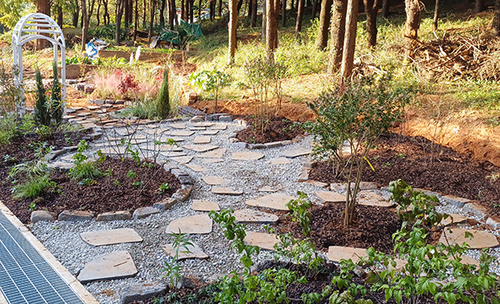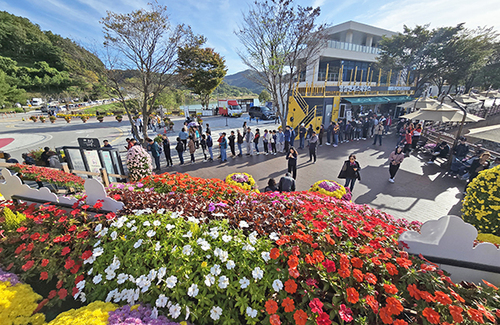| ▲ 내수면 생태환경 개선 및 토종어류 자원 보존을 위해 전북 수산기술연구소가 지난 2월부터 자체 생산한 어린 참게 18만 마리가 도내 하천에 방류된다. © 박동일 기자 |
|
| ▲ 전북 수산기술연구소가 자체 생산해 지난 2001년부터 현재까지 345만마리의 어린 참게와 총 15개 품종 3억7,100만마리를 생산해 도내 금강ㆍ하천 등지에 방류한 실적. / 도표제공 = 전북도청 © 박동일 기자 |
|
내수면 생태환경 개선 및 토종어류 자원 보존을 위해 참게 18만 마리가 방류된다.
전북 수산기술연구소는 "사라져가는 참게의 자연생태계 복원과 자원조성 및 농어업인 소득증대를 위해 지난 2월부터 자체 생산한 어린 참게를 오는 4일과 6일 도내 하천에 방류한다"고 1일 밝혔다.
이번에 방류될 어린 참게는 수산생물 전염병 검사를 마친 갑폭 0.7cm 이상의 건강한 개체로 익산 만경강ㆍ금강ㆍ김제 원평천ㆍ고창군 주진천 등에 방류될 예정이다.
참게는 바다ㆍ강ㆍ하천 등에 광범위하게 서식하며 가을철에 번식을 위해 바다로 이동해 하구 근처에서 교미 후 암컷이 해변가 바다에서 알을 낳고 몸에 품어 부화한 새끼는 유생 상태로 민물로 올라오는 회유성 품종의 갑각류다.
어린 참게는 하구 및 바다에 가까운 민물 논두렁이나 논둑에 구멍을 파고 살며 잡식성으로 약 1~2년 후 상품성 있는 어미 게로 성장해 어업인은 물론 지역주민의 소득 증대에 크게 이바지할 것으로 전망된다.
참게는 주로 찜ㆍ탕ㆍ게젓을 담는 데 이용되며 전통적으로 인기 있는 중요한 내수면 자원이다.
현존하는 시조집 가운데 가장 오래된 '청구영언(조선 후기까지 구비 전승된 총 580수의 노랫말을 수록한 우리나라 최초의 가집(歌集)'에 조선 초기 명재상 황희의 시에도 등장할 만큼, 과거 농경사회의 하천과 논ㆍ둑에서 흔하게 볼 수 있었으나 80~90년대 산업화 시기를 거치면서 개체수가 감소해 자원량 확대가 필요한 품종이다.
수산기술연구소는 지난 2001년부터 현재까지 345만마리의 어린 참게와 총 15개 품종 3억7,100만마리를 생산해 도내 금강ㆍ하천 등지에 방류했다.
전북도 전병권 수산기술연구소장은 "점차 사라져가는 토속 어종과 경제성 높은 어종의 지속적인 방류를 통해 생태계복원 및 소득증대를 위해 노력하고 있다"며 "현재 역점사업으로 추진하고 있는 친환경 내수면 갑각류 연구시설이 올 하반기 완공되면 다양한 품종의 갑각류 생물자원 확보 및 양식기술 개발 등 내수면 양식 산업의 질적 성장을 위한 연구 사업을 추진할 계획"이라고 말했다.
한편 수산기술연연구소는 올해 ▲ 붕어(30만) ▲ 다슬기(74만) ▲ 대농갱이(3만) ▲ 쏘가리(3만) ▲ 미꾸라지(119만) 등 총 247만 마리의 어린 물고기를 자체 생산해 방류할 예정이다.
☞ 아래는 위 기사를 구글 번역이 번역한 영문 기사의 '전문' 입니다.
구글 번역은 이해도를 높이기 위해 노력하고 있으며 영문 번역에 오류가 있음을 전제로 합니다.
【Below is the 'full text' of the English article translated by Google Translate.
Google Translate is working hard to improve understanding, and assumes that there are errors in the English translation.】
Released 180,000 snow crabs in Jeollabuk-do
Own production of fishery technology research institute… Wonpyeongcheon Stream in Gimje, Jujincheon Stream in Gochang, etc
Reporter Park Dong-il
180,000 blue crabs are released to improve the ecological environment of the inland waters and preserve native fish resources.
Jeonbuk Fisheries Technology Research Center announced on the 1st, "In order to restore the natural ecosystem of the disappearing blue crab, create resources, and increase the income of farmers and fishermen, young blue crabs produced in-house since February will be released into rivers in the province on the 4th and 6th."
The juvenile blue crabs to be released this time are healthy individuals with a carapace of 0.7 cm or more that have been tested for infectious diseases of aquatic organisms and will be released to Mangyeong River in Iksan, Geum River, Wonpyeong Stream in Gimje, and Jujin Stream in Gochang-gun.
Blue crabs live extensively in the sea, rivers, and rivers, and they migrate to the sea for breeding in autumn, mate near the estuary, and then the female lays eggs in the sea near the beach. are crustaceans
Young blue crabs live by digging holes in freshwater paddy fields or banks near estuaries and the sea. They are omnivorous and will grow into commercially available mother crabs after about 1 to 2 years, which is expected to greatly contribute to increasing the income of local residents as well as fishermen.
Blue crabs are mainly used for steaming, stewing, and salted crab, and are traditionally popular and important inland water resources.
Among the extant poetry collections, it appears in the poems of Hwanghui, the famous scholar of the early Joseon Dynasty, in the oldest 'Cheonggyeongyeongeon' (the first collection of lyrics in Korea that contains a total of 580 songs passed down orally until the late Joseon Dynasty). It was commonly seen in paddy fields and embankments, but as the number of individuals decreased during the industrialization period of the 80s and 90s, it is a variety that requires expansion of resources.
Since 2001, the Fisheries Research Institute has produced 3.45 million young blue crabs and a total of 371 million from 15 varieties, which have been released to the Geumgang and rivers in the province.
Jeon Byung-gwon, head of the Fisheries Technology Research Center in Jeollabuk-do Province, said, "We are making efforts to restore the ecosystem and increase income through the continuous release of gradually disappearing indigenous and highly economical fish species." "We plan to carry out research projects for the qualitative growth of the inland aquaculture industry, such as securing biological resources for various types of crustaceans and developing aquaculture technology," he said.
Meanwhile, the Fisheries Research Institute is expected to produce and release a total of 2.47 million young fish this year, including ▲ crucian carp (300,000) ▲ squid (740,000) ▲ mackerel (30,000) ▲ mandarin fish (30,000) ▲ loach (1.9 million). Is expected.






















 많이 본 뉴스
많이 본 뉴스











